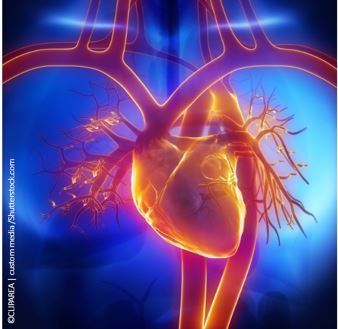Article
Impact of Atrial Arrhythmias on Pulmonary Arterial Hypertension
Pulmonary arterial hypertension is often complicated by atrial arrhythmias; a new study sheds light on the clinical impact.
©CLIPAREA_custom media/Shutterstock.com

Atrial arrhythmias commonly complicate the clinical course of patients with pulmonary arterial hypertension (PAH). Despite this recognition, the prevalence of atrial arrhythmias and their impact on mortality has not been well described. To address this knowledge gap, investigators at Johns Hopkins University described their institutional experience with atrial arrhythmias. Their results appeared online, April 17, 2018, in Pulmonary Circulation.
In total, 317 consecutive patients (201 scleroderma-associated PAH, 116 idiopathic PAH) were described (84% female, 76% white). Atrial arrhythmia was defined as atrial fibrillation, atrial flutter, or ectopic atrial tachycardia. Over a follow-up period of 67 ± 51 months, 42 (13%) patients developed an atrial arrhythmia. Male sex, older age, and a history of thyroid disease were more common in patients who developed an atrial arrhythmia. When assessed via invasive hemodynamics, right- and left-sided filling pressures were higher in patients with an atrial arrhythmia. There was no association with PAH pharmacotherapy.
Atrial fibrillation was the most common atrial arrhythmia (34 episodes in 42 patients), followed by atrial flutter (18 episodes). Electrical cardioversion to sinus rhythm was attempted in 13/42 (31%) cases, however, 64% of patients had a recurrent episode. In total, 13/42 (31%) patients underwent ablation for atrial fibrillation. Development of an atrial arrhythmia led to clinical worsening and hospitalization in 38/42 (90%) patients. Right heart failure was the most common clinical complication and required vasopressor support in 15/42 (36%) patients.
Over the follow-up period, 170/317 (54%) deaths occurred, including 69% of subjects who experienced an atrial arrhythmia compared with 51% of those who did not (p=0.32). The highest mortality was observed in patients with scleroderma-associated PAH who developed an atrial arrhythmia whereas the lowest mortality occurred in patients with idiopathic PAH without an atrial arrhythmia.
This study is an important addition to the literature because the authors specifically focused on World Health Organization Group 1 PH, while prior studies have reported on heterogeneous cohorts of patients with PH. The main conclusion is that atrial arrhythmias are common and associated with clinical worsening in patients with idiopathic and scleroderma-associated PAH. Right ventricular failure was the predominant complication of atrial arrhythmia, which the authors concluded was related to loss of right atrial contractility. The clinical implication of this observation is that a rhythm control strategy (ie, restoration of sinus rhythm and “atrial kick”) may be particularly important for this patient population. Although the incidence of atrial arrhythmia was similar between groups with idiopathic vs scleroderma-associated PAH, patients with scleroderma had a higher risk of death, drawing attention to a particularly high-risk subpopulation.
Important limitations of the study include the single-center cohort and potential for contamination with patients with left heart disease.
Source: Mercurio V, Peloquin G, Khalil BI, et al. Pulmonary arterial hypertension and atrial arrhythmias: incidence, risk factors, and clinical impact. Pulm Circ. 2018;8:1-8.





